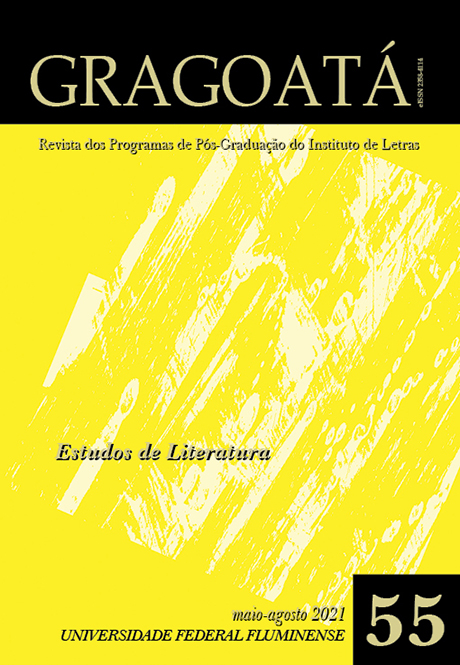Outros espaços nas artes visuais
DOI:
https://doi.org/10.22409/gragoata.v26i55.47755Resumo
O artigo caracteriza, inicialmente, a concepção de temporalidade que vigorou no imaginário das vanguardas artística dos anos 1910 aos anos 1930: a ideia de um tempo linear, sucessivo, cumulativo, homogêneo e “vazio”, porque para ser conquistado. Foi esta concepção de tempo prospectivo, teleológico, no qual o télos é a Utopia, que orientou as vanguardas construtivas até a Segunda Guerra Mundial. Depois do Holocausto (ou das bombas de Hiroxima e Nagasaki), as ideias de progresso, ou de aperfeiçoamento, próprias dessa concepção prospectiva do tempo, ruíram. O futuro deixou de ser considerado o reino da esperança, da projeção do desejo, para tornar-se sombrio ou ameaçador. Desde então, vigora no imaginário artístico-cultural a noção de distopia, ou utopia negativa, entendida como a figuração de uma sociedade opressiva projetada no futuro próximo ou distante, à qual se chegará se não forem alterados os rumos da história. É o que verificamos nas obras visuais do alemão Harun Farocki, do chinês Ai Weiwei e do espanhol Antoni Muntadas, realizadas nas três últimas décadas, nas quais a distopia é apresentada como sociedade de controle. Por fim, acentuamos que diversos críticos de arte vêm mobilizando desde os anos 1990 a noção de heterotopia de Michel Foucault para caracterizar o poder de negatividade de certa arte contemporânea. Recordamos que as heterotopias são, para o autor, “contraposicionamentos em lugares reais”, “lugares efetivos”; ou seja, “lugares” que, em aparente paradoxo, “estão fora de todos os lugares, embora sejam efetivamente localizáveis”, como ocorreria, a nosso ver, nas instalações de Rirkrit Tiravanija (ou, mais remotamente, em Lygia Clark, e Hélio Oiticica).
Palavras-chave: arte contemporânea. Utopia. Distopia. Heterotopias. reistência.
Downloads
Downloads
Publicado
Edição
Seção
Licença
AUTORIZAÇÃO
Autores que publicam em Gragoatá concordam com os seguintes termos:
Os autores mantêm os direitos e cedem à revista o direito à primeira publicação, simultaneamente submetido a uma licença Creative Commons Atribuição 4.0 Internacional (CC BY 4.0), que permite o compartilhamento por terceiros com a devida menção ao autor e à primeira publicação pela Gragoatá.
Os autores podem entrar em acordos contratuais adicionais e separados para a distribuição não exclusiva da versão publicada da obra (por exemplo, postá-la em um repositório institucional ou publicá-la em um livro), com o reconhecimento de sua publicação inicial na Gragoatá.
A Gragoatá utiliza uma Licença Creative Commons - Atribuição CC BY 4.0 Internacional.











